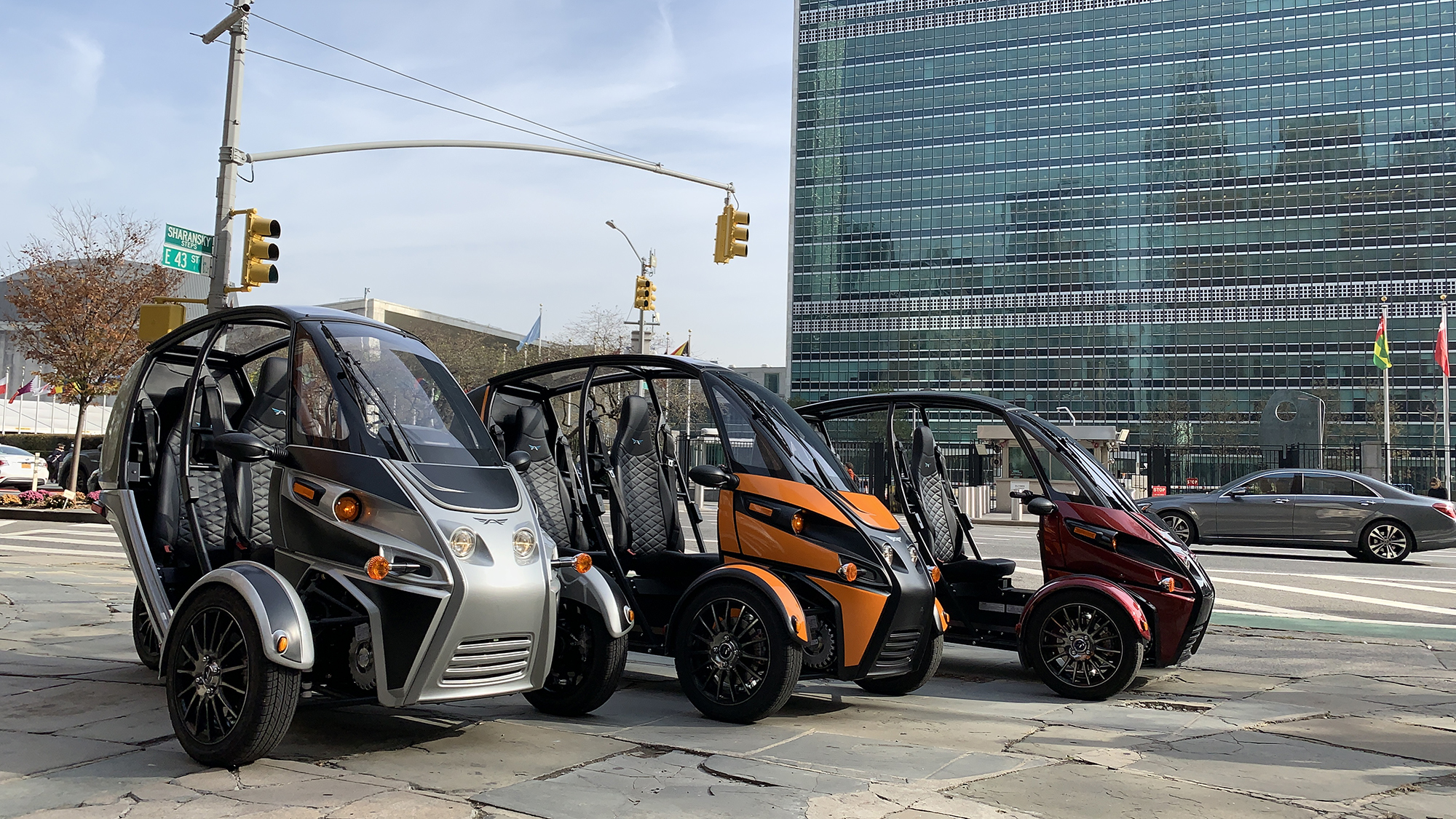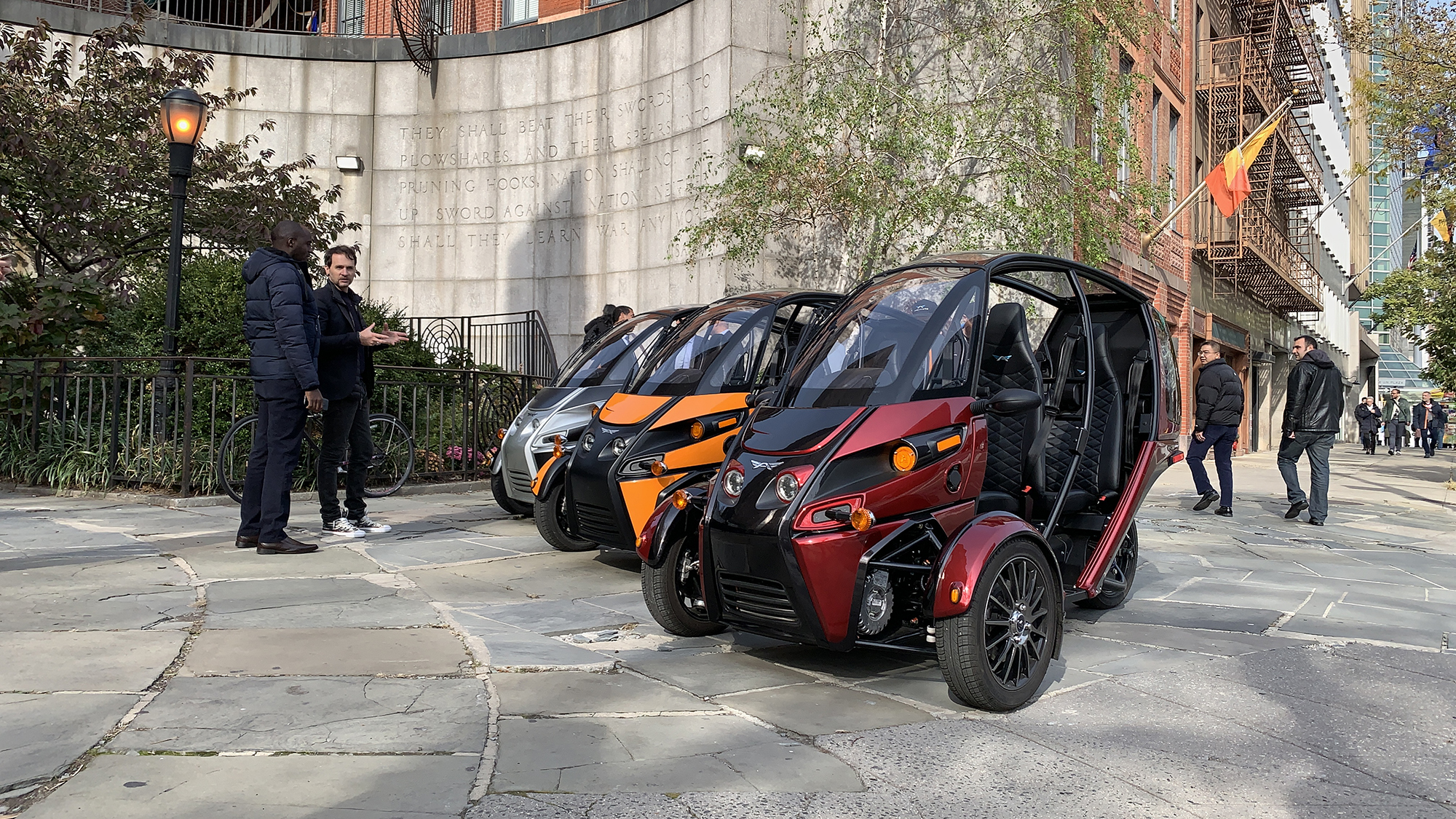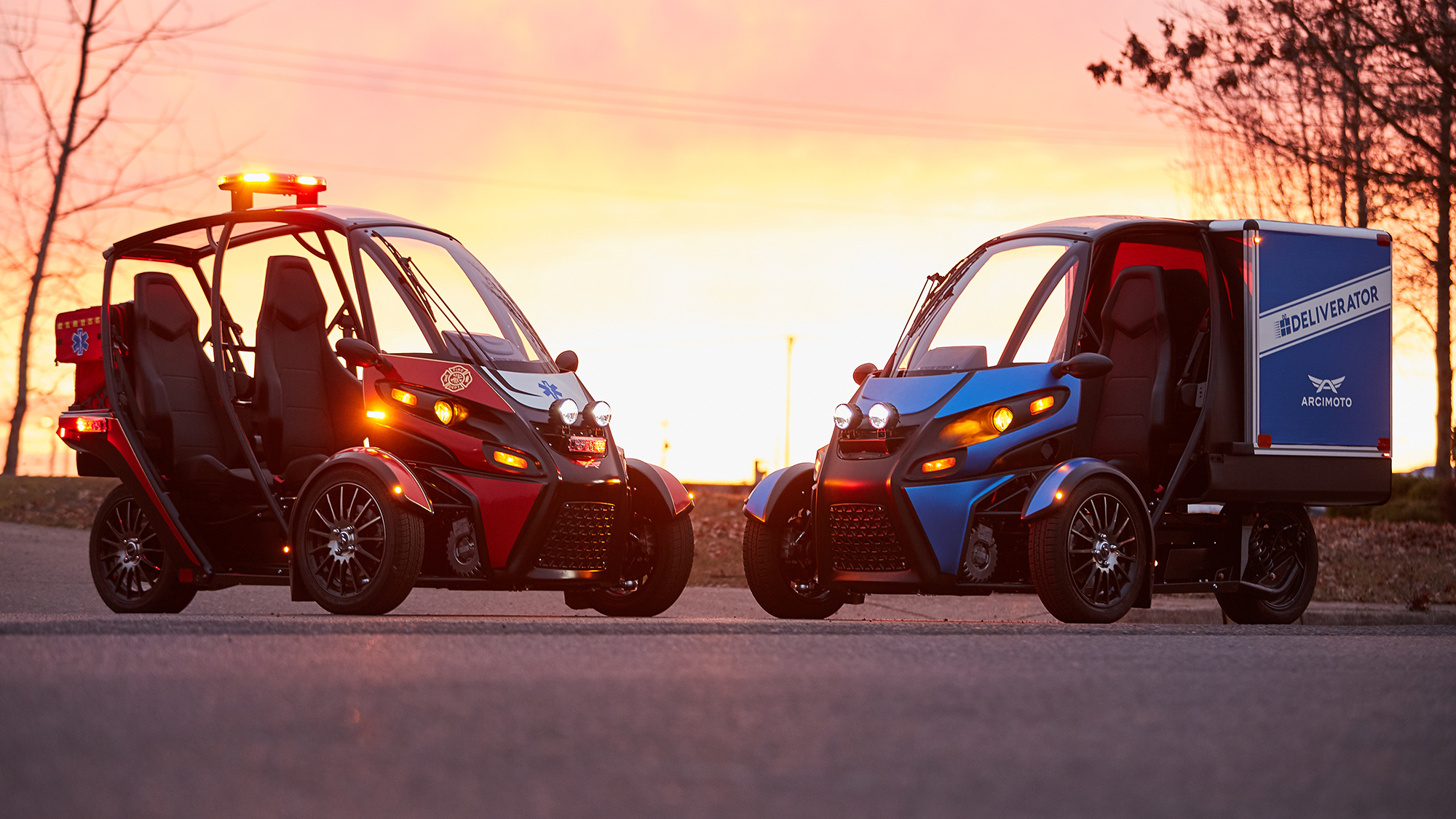I drove a three-wheeled electric vehicle in NYC and lived to tell about it
A startup’s pitch for the future of personal mobility.

What do you call a three-wheeled electric vehicle with a top speed of 75 miles per hour that you steer with handlebars?
Arcimoto calls it a “Fun Utility Vehicle.”
The Eugene, Ore.-based manufacturer begun making deliveries of its $19,900 FUV in September. The vehicle is a car/motorcycle hybrid that’s spent 12 years in development, and gone through seven revisions before culminating in what you see here.
The FUV seats two, has a range of 100 miles, and in some states — but not all — you need a motorcycle license to pilot it.
I have never ridden an electric scooter, let alone a motorcycle, so I was somewhat amazed when Arcimoto arrived outside Tom’s Guide’s Manhattan headquarters and entrusted me to test drive an FUV around midtown and the Upper West Side.
In the hands of a skilled driver, there’s no question the FUV can carve through New York traffic almost as well as a motorcycle. The thing is so tiny and nimble that it can fit in places ordinary cars can’t. Even the smallest of hatchbacks are fazed by the odd maintenance vehicle parked in the middle of a one-way street, but never the Arcimoto.
In the hands of a novice like myself, however, the experience was more “find a lane, and stay in it.” It takes a little while to come to terms with the responsiveness of the throttle, not to mention the force needed to steer. But once you get accustomed to the FUV’s characteristics, driving the vehicle is not as stressful an experience — even in New York — as it might look: It’s actually a blast.
Sign up to get the BEST of Tom's Guide direct to your inbox.
Get instant access to breaking news, the hottest reviews, great deals and helpful tips.
The FUV handles the bumps and inconsistencies of Manhattan’s roads much more smoothly than you’d expect. There are sports cars that are more jarring to ride around here. I played the passenger during the first part of the journey, and even though I didn’t have the benefit of a windshield directly in front of me, the FUV’s heated seats ensured I was warm against the wind chill. The double-shoulder belts kept me firmly in place, though I still had to hold onto the frame around tight corners.
What surprised me the most about the FUV was just how civilized and refined it is. Granted, the near-$20,000 price (before tax credits) for the launch Evergreen edition vehicle I tested is arguably high for a city EV. In the future, the company hopes to offer a base model for as low as $12,000.
Regardless, the FUV has amenities like heated seats, heated grips for the handlebars, an LCD screen for the speedometer, cupholders, a lockable cargo box, Bluetooth stereo speakers and yes, even doors, which can be removed Jeep Wrangler-style. The whole thing is remarkably solid, despite how it may look from the outside.
Oh, and it can really move. The FUV tips the scales at just 1,300 pounds but is pulled along by two, 81 horsepower (combined) electric motors . Because the torque is available instantaneously, the FUV gets away from stop lights really, really fast: It can hit 60 mph from a standstill in just 7.5 seconds. That’s according to Arcimoto — I wasn’t brave enough to verify that claim myself, at least not in the city.

With so much power and such low weight, Arcimoto’s three-wheeler is a ton of fun to whip around in. I wish I could’ve driven it anywhere but New York City to really give it the beans — both because it would have made for a less nerve-racking afternoon, and because the FUV’s sheer agility can be a little terrifying to deal with for the uninitiated.
At one point during my run, I took a left turn a bit more quickly than I intended to when I unconsciously tightened up my right hand on the throttle grip. The jab of power to the front wheels pushed the vehicle out wide and nearly caused me to understeer into a parked car.
The process of slowing down is also a little more complicated than I expected. There’s a lever above the throttle that looks like a brake but isn’t. Rather, it triggers the electric motors’ energy-recovery system, sending kinetic power obtained when decelerating back into the batteries.
Most of the braking is done with a foot pedal on the right side, though I found it was lacking in feedback and didn’t quite have enough range of motion to properly communicate how much stopping force I was applying.
The sponginess of that pedal is probably my only serious gripe about the whole package, though I never had any issues stopping in time. Other controls, like the parking brake and signals, are all controlled digitally via buttons.
Ultimately, you put up with the FUV's little idiosyncrasies for two major benefits — maneuverability and visibility. It's freeing to be able to turn your head and see the entire world outside of your vehicle. There are no blind spots, and the front tires are perfectly within your field of vision. That level of awareness is impossible in an automobile, and it gives you confidence that almost makes up for the anxiety of driving something much lighter and ostensibly more fragile than a regular car.
Which brings me to my final question about the FUV: Who is it for?
Arcimoto sees a world in which the FUV could be someone's only vehicle. While that's a nice thought — and the environmental pitch writes itself — the FUV is suitable for some driving scenarios more than others.
I wouldn’t, for example, prefer an FUV instead of a car out in the semi-rural part of New Jersey I hail from, where most trips necessitate use of Interstate 78. But in the five boroughs? Yeah, I could see that.

It helps that the FUV’s uses extend beyond fun. Arcimoto has developed versions for couriers and law enforcement, designed to lessen a fleet’s costs and ecological footprint while speeding up response times. The company has supplied Rapid Responder FUVs to its hometown fire department in Oregon and expects to fill orders to other stations next year. Arcimoto is even entertaining the prospect of a rental service.
So, while I’m not totally convinced tht the FUV could be the ubiquitous, general car replacement Arcimoto probably would like it to be, the startup has still crafted a versatile runabout EV that actually excites people — even those who aren’t physically riding in one.
I lost count of the number of bystanders, taxi drivers and passengers that stopped in place or lowered their windows just to ask us what we were driving. Arcimoto has certainly created a head-turner, and these days, there aren’t very many electric vehicles about which you can say that.
Adam Ismail is a staff writer at Jalopnik and previously worked on Tom's Guide covering smartphones, car tech and gaming. His love for all things mobile began with the original Motorola Droid; since then he’s owned a variety of Android and iOS-powered handsets, refusing to stay loyal to one platform. His work has also appeared on Digital Trends and GTPlanet. When he’s not fiddling with the latest devices, he’s at an indie pop show, recording a podcast or playing Sega Dreamcast.
